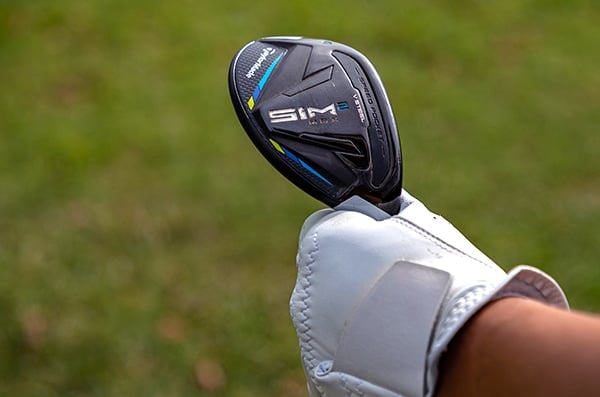-
{{link.label}}{{link.label}}
Hybrid vs. Driving Iron: Which One Should I Use?
On this page
When it comes to golf clubs, the hybrid is still somewhat in its infancy. It only grew in popularity at the turn of the century when top brands looked to cater to a wider range of golfers. Bridging the gap between the irons and the fairway wood, the hybrid became a savior for many golfers.
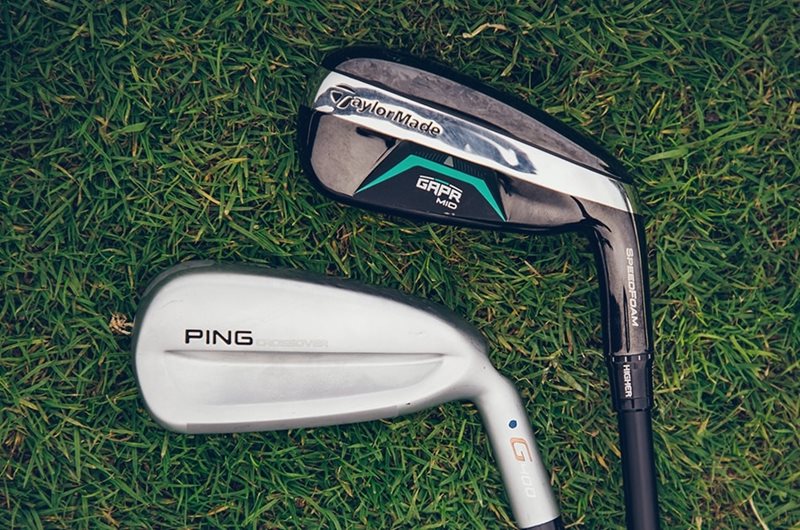
But as the hybrid was settling in its niche market as the perfect substitute for long irons, a worthy competitor emerged from the innovation of forgiving technology in the form of driving irons. Though they are not new to the market, these irons have been through major tech upgrades over the past decades helping long irons to make a return in the bag of many golfers. Now, this is all good and well, but if you’ve never tried either or if you only got to experience one of them, you might be asking yourself “Which one should I use?” or “How can I find the right hybrid or driving iron for me?”.
Well, you’re in luck! The following will answer the most essential questions regarding hybrid and driving irons by highlighting their differences, their pros, and cons, and by identifying which of the two is best suited for beginner golfers. We’ll also include a performance comparison between two popular models to help you visualize the difference between the two.
Shop Hybrids and Driving Irons
What is a Hybrid?
A cross between a fairway wood and an iron, the hybrid was originally meant to bridge the gap between the two club types but has even grown to replace long irons (2, 3, 4, 5 iron) as a more forgiving option. This new trend has helped popularize combo iron sets where long irons are replaced by hybrids and the rest of the set is made of irons.
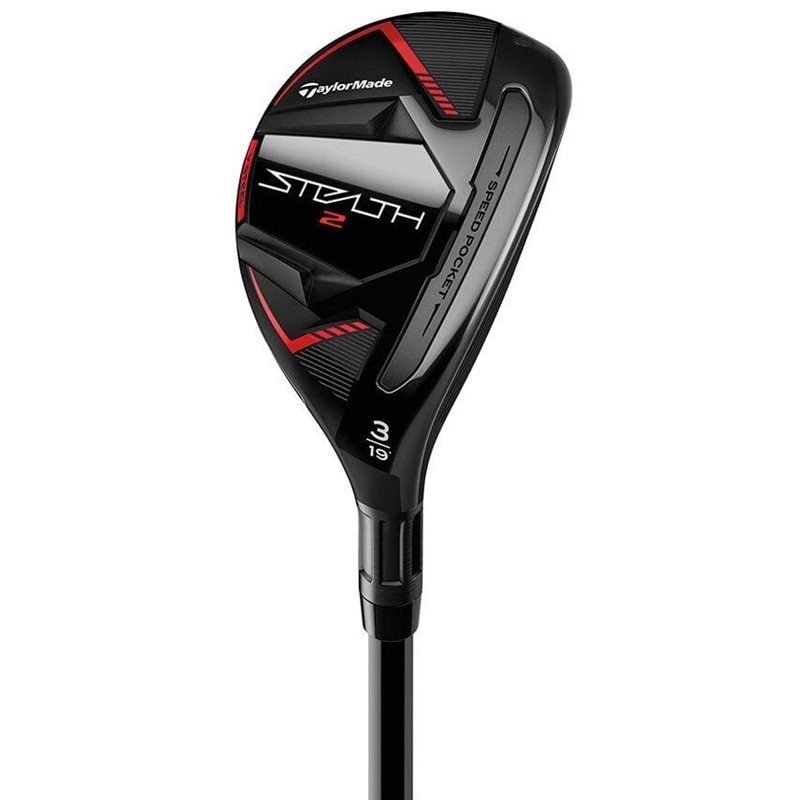
What does a hybrid look like?
The cross between the two club types is easy to see from the look of hybrids. The clubhead shape will typically remind golfers of more compact versions of traditional fairway woods. This clubhead style is often referred to as a “rescue” club.
Hybrids will usually have a smaller club face in terms of width from heel to toe than a fairway wood, but most will feature the same hollow body clubhead as fairway woods. The club face of hybrids will also remind golfers of fairway woods as it features the same convex build, which you won’t find on the flat, or “straight”, club face of irons.
How does a hybrid perform on the golf course?
Performance-wise, the combination is not as obvious, but it quickly becomes clear when you have a hybrid in your hands. Most of them will look to blend the control and spin rates of irons with the forgiveness and launch angle of fairway woods.

Pictured above: Ball flight trajectories of TaylorMade Stealth 2 Fairway Wood (Red) and TaylorMade Stealth 2 Hybrid (Yellow).
The higher level of forgiveness and the larger clubhead makes for a much easier club to hit than the long irons that golfers have struggled with for so long. The launch conditions will be very similar to hitting a fairway wood, but hybrids usually pack much more stopping power once the ball hits the ground, thanks to the “irons” attributes it possesses.
In other words, when it comes to the performance of hybrids expect high-launching golf balls that will stop rapidly because of the higher spin rates. Take the two clubs below as an example. The first image is the performance data from a TaylorMade Stealth 2 fairway wood released in 2023, and, below, is the performance data from a Stealth 2 hybrid from the same line of clubs, which ranks amongst the best hybrids on the market.
TaylorMade Stealth 2 Fairway Wood – Performance avg. from the fairway

TaylorMade Stealth 2 Hybrid – Performance avg. from the fairway
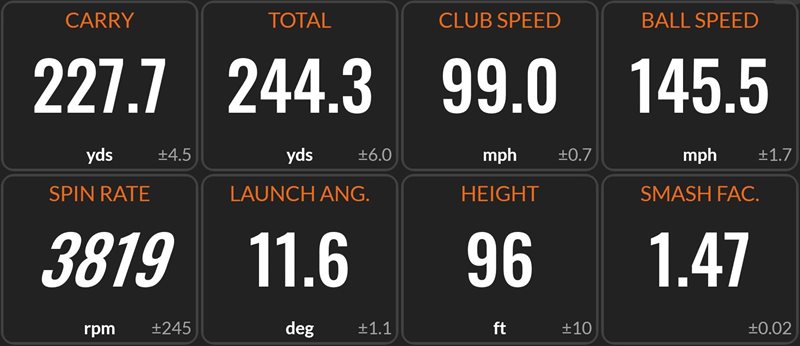
The data from our test shows that there are notable differences in key performance indicators. Looking at distances first, we see that although the hybrid strike travelled longer in the air, the wood benefited from a much greater roll once the ball hits the ground. The total distance difference is not that major, but the ball trajectory was very different from one another.
The theory that hybrids have a greater stopping power is easily observable here as well. The difference in total and carry distance is of less than 20 yards for the hybrid and of more than 30 yards in the case of the wood. Ball height and spin rates are noticeably higher with the hybrid and are contributing to factors to this stopping power.
How should you hit your hybrid?
There’s usually no need to change anything to your swing when hitting your hybrid. If you’re looking for optimal performances, you’ll want to hit your hybrid just like you would an iron. Basically, you’re looking to compress down on the golf ball rather than sweep it off the ground like you would with a fairway wood.
When hitting a hybrid off the tee, you should still try to compress the ball as the hybrid will naturally launch the ball at a higher angle. If you were to try and hit it like a fairway wood or a driver, you risk launching too high, which will ultimately result in a loss in distance.
Pros of a hybrid:
- Larger clubhead than typical long irons, creating a greater sense of comfort at address.
- Higher level of forgiveness than long irons and most driving irons.
- High launch angles – perfect for golfers who struggle to get the ball airborne.
Cons of a hybrid:
- Most models will tend to have a limited amount of control over the golf ball’s trajectory.
- The feedback at impact is not always as true as it is with long irons or driving irons.
What is a Driving Iron?
A driving iron, as its name suggests, is a specific type of iron, typically designed to be used as a “substitute” to a driver when the circumstances call for it. While we don’t recommend trading your driver for a driving iron, replacing one or more of your long irons with driving irons might be beneficial to you.

A quick note before going any further. Driving irons can also be referred to as utility irons. There are slight differences between the two (the latter tends to have wider soles, larger clubheads, and provide more offset than the former) but the terms are generally accepted as substitutes for one another. We will be mostly sticking to the term “driving iron”, but unless otherwise indicated, “utility iron” will be used as a substitute here.
What does a driving iron look like?
Most driving irons will simply look like a bulkier version of a long iron in a typical iron set. The clubhead will tend to be much deeper than your usual long iron, often, the club face will also be slightly larger than most irons, and even most hybrids! As previously mentioned, the club face of a driving iron will be flat, rather than convex, and will feature grooves, just like any other iron.
How does a driving iron perform on the golf course?
In terms of performance on the golf course, the driving iron will tend to have performances more similar to your typical iron, but there will be some noticeable differences, especially when it comes to the level of forgiveness.
The launch angle of the driving iron tends to be flatter than most irons. This is in part because driving irons usually have lower loft angles than most irons, but the trajectory of driving irons also plays a key role as it is normally intended to be a much more penetrating trajectory and you’ll often be hitting this club off the tee.


Pictured above: Ball flight trajectories of Titleist CNCPT-CP02 Iron (Blue) and Titleist U505 Utility Iron (Green).
You can expect your driving iron to typically behave like a regular iron with a similar ball flight, although slightly more piercing while providing you with a higher level of forgiveness, whether that’s off the tee or down in the alley. Expect a greater amount of roll with the hybrid once the ball touches the ground than with a driving iron.
The two clubs below serve as an example to illustrate the difference in performance between a long iron and a driving iron. The first image is the performance data from a Titleist CNCPT-02 3 iron, which shows a thinner clubhead profile than most hollow body irons, and, below, is the performance data from a Titleist U-505 3 hybrid which is also considered a Utility Iron, and one of the best driving irons on the market for less-experienced players.
Titleist U505 Utility Iron – Performance avg. from the fairway
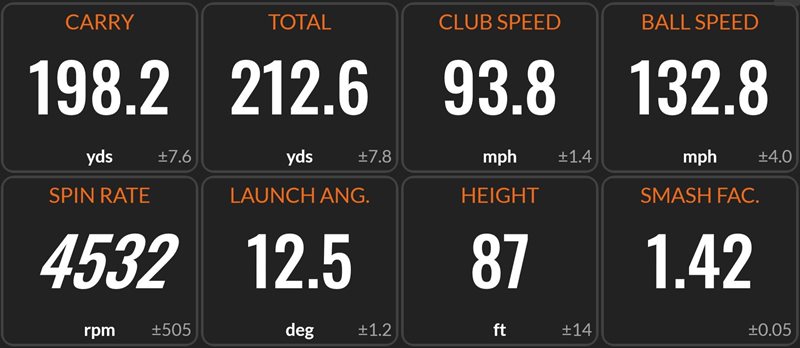
Titleist CNCPT-CP02 Iron – Performance avg. from the fairway

The data from these two clubs helps to reinforce the idea that driving irons behave very similarly to typical long irons while providing more forgiveness on impact.
A deeper analysis of this data shows that the club speed was almost identical for both clubs, which explains the similarities between the two in almost every single category. The main differences are ball speed and ball height.
Not too shocking to see height being higher with the iron considering the spin rate is also slightly higher. Most would expect the total distance discrepancy between the two of them to be greater considering the higher ball speed of the 3 iron, but with the clubhead of the CNCPT-CP02 being thinner, the extra ball speed is needed to travel the same distance.
How should you hit your driving iron?
Just like you would with any other iron or hybrid, you’re looking to compress the ball at impact, by hitting down on the ball, rather than sweep it or launch it up like you would with a driver. The “gear effect” is in full force here since driving irons have grooves like the ones on other irons.
Nothing to change off the tee either. If you’re looking for the ball to stop faster once it hits the ground, feel free to tee the ball up higher and look to hit up on the ball rather than compress down on it like you usually would. But unless you’re specifically trying to get more stopping power, keep the same attack angle on the ball, even hitting off a tee.
Pros of a driving iron:
- Higher forgiving level than typical long irons because of the bulkier clubhead profile.
- Piercing trajectory that allows golfers to produce longer strikes off the tee with their irons.
- Greater feel for the ball than a hybrid, and, usually, allows for more control over the trajectory of the ball.
Cons of a driving iron:
- Not as forgiving as the hollow clubhead of most hybrids.
- Limited stopping power when the ball hits the ground compared to your typical irons.
Performance comparison
To get a better understanding of the difference in performance between the two club types, we decided to use our Titleist U-505 driving iron once again and put it to the test against the Titleist TSr2 hybrid. We compared the performance of each club against one another, both on and off the tee.

Pictured above: Ball flight trajectories of Titleist U505 Utility Iron (Green) and Titleist TSr2 Hybrid (Red).
Let’s first take a deeper look at the difference in performance between the two of them when you’re using them from the fairway.
Titleist U505 Utility Iron – Performance avg. from the fairway

Titleist TSr2 Hybrid – Performance avg. from the fairway
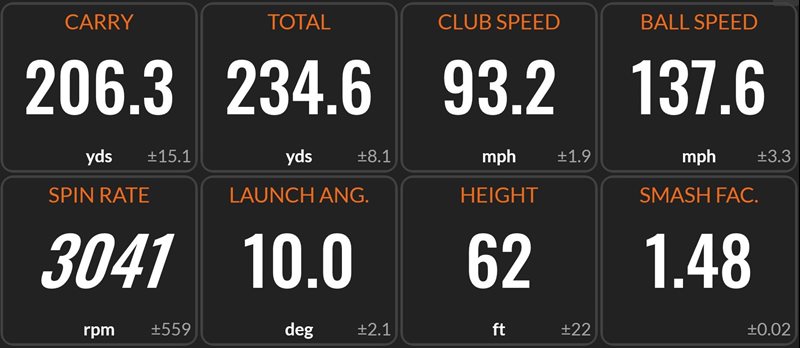
Right away, there are a few things that jump out when you look at the data from these two clubs.
First, the discrepancy in terms of total distance is massive with 22 additional yards in favor of the TSr2 hybrid. Multiple factors can explain this, such as the higher ball speed of the hybrid (despite having the almost exact same club speed for both clubs), its lower launch angle, and lower spin levels.
The higher ball speed will naturally carry the ball further, which was the case during our test. The lower launch angle will not only help limit the effects of the wind against your ball, but it will also contribute to getting an optimal rollout once the ball touches the ground. The combination of the lower launch angle with a lower spin rate makes for a massive rollout, like in the case of the TSr2.
Next, let’s look at how they measure up to each other when you’re using them off the tee.
Titleist U505 Utility Iron – Performance avg. off the tee

Titleist TSr2 Hybrid – Performance avg. off the tee
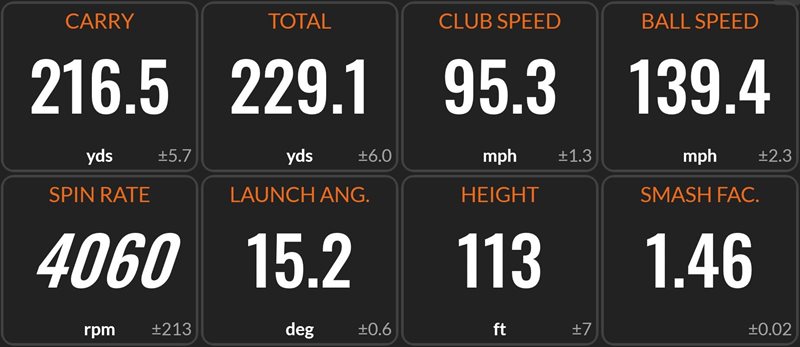
Here again, there is a massive difference when it comes to the total distance between the two of them. While the discrepancy between them is not as massive off the tee, it needs to be said that the driving iron’s total distance was the carry distance of the hybrid.
Here again, club and ball speed are playing a key role. The difference in club speed is more noticeable off the tee than it was off the ground, but it’s not drastic. In terms of ball speed, we see another split of about 5 mph between the two clubs.
Off the tee, however, the discrepancy in rollout is not as important as it was off the ground. Off the tee, the hybrid rolled for an extra 14 yards, while the driving iron rolled for an extra 12 yards. A much tighter difference than the almost 30 yards of roll that the TSr2 was getting from the strikes off the ground, compared to U-505’s 14 yards.
Which one is best for beginners?
Based on the data we gathered from our test and the analysis we just conducted, it’s easy to affirm that hybrids are better suited to beginners or high handicappers as they not only provide more forgiveness but also produce higher ball speed, which in turn produces more distance, a key objective for many beginners on the course.
Control is more limited when it comes to your typical “rescue” hybrid, but beginners typically don’t concern themselves too much with this aspect of the game. Rather, they’re always on the hunt for ways to gain distance when they’re out on the course, which the hybrid can easily do, especially if they’re added to the bag to replace long irons.
That is not to say that driving irons are of no interest to anyone, as that would be completely inaccurate (I would know, I personally have one in the bag that I love!), but they are mostly targeted to players with a slightly higher skillset.
Which one is best off the tee?
Off the tee, the hybrid takes the cake here too, but the case for the driving iron has a strong case. If you’re looking for some help off the tee in the form of longer strikes when you can’t use your driver or your fairway wood, you can go wrong with the high ball speeds and the forgiveness of a hybrid.

On the other hand, golfers looking for more control over the golf ball and who can make up the difference in distance with faster swing and club speeds will certainly appreciate its ball flight. The extra height off the tee will be very nice for players looking for optimal accuracy on the course.
When are you ready to start using a driving iron?
You’ll realize that you’re ready to transition to a driving iron once you start feeling like you don’t have enough control over the trajectory of your golf ball with your hybrid.
As mentioned, hybrids are very powerful clubs and tend to provide a lot of forgiveness on impact, but they are usually limited when it comes to the feel of the ball as well as the control over the trajectory of the golf ball.
When you start feeling like you don’t need the added yardage of the hollow clubhead of a hybrid, this is usually a tell-tale sign that you’re ready to move on. Of course, you can experiment with other hybrid models that have a tighter clubhead profile, but none will provide you with the feel and control of a driving iron.
Which club does a driving iron replace?
Based on the data we gathered during this test, especially looking at the comparison between the CNCPT-CP02 iron and the U-505 driving iron we can confidently conclude that a driving iron can directly replace any long iron in your golf bag.
Basically, if you’re struggling to swing your long irons consistently, whether that’s your 3, 4, or 5 iron, and would like to limit your troubles with them on the course, your best course of action is most likely to replace your long irons with driving irons. Distance gapping between the clubs will play a key role as you’ll want to preserve a gap that suits you.
As previously mentioned, you can also replace hybrids with driving irons, especially if this is simply a concern of bridging the gap between your woods and your irons.
Should you replace your irons with hybrids?
You can certainly replace your irons with hybrids if you believe that this can be beneficial to your performance on the course. As golfers grow older, they tend to lose out on swing speed which is why many will turn to hybrids who tend to naturally have hotter club faces that result in longer strikes.
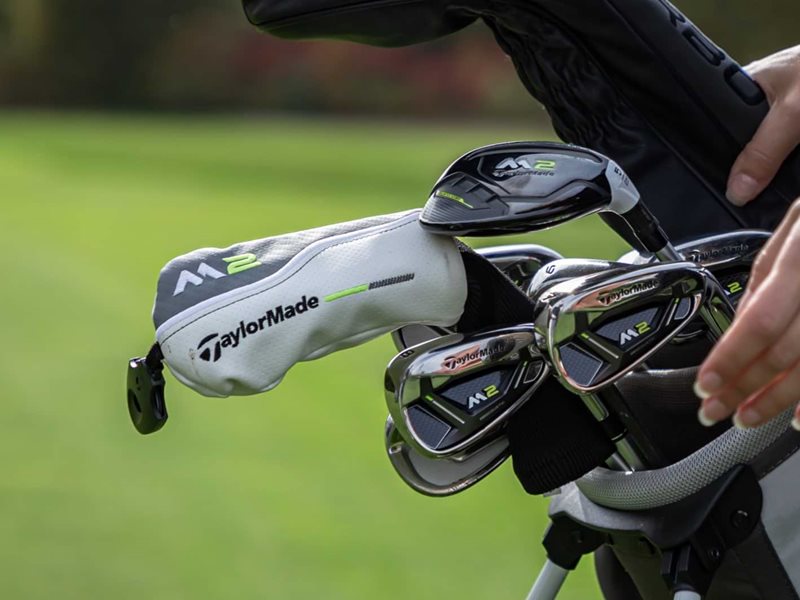
This is already very common for golfers who might be using the wrong irons for their skill level. Those golfers can already turn to combo iron sets where long irons are replaced with hybrids for easier use by beginners and less-experienced golfers.
Some specific models, like the Cleveland Launcher XL Halo, are designed to look and feel like you’re using hybrids with your long irons, all the way down to your wedges. These types of iron sets are often referred to as “super game-improvement” irons as they are even more forgiving than your typical cavity-back game-improvement iron.
Hopefully, you now have a better understanding of the differences between a hybrid and a driving iron. While both have their pros, it’s important to understand your needs on the course to figure out which one is best for you.
The information we provided in this article should help you make a confident decision so that whatever club type you decide to go with, whether it’s a hybrid or a driving iron, you’ll be making the right choice for you and your golf game.
But if you feel like you still need some additional help to make up your mind, you can always book a call with one of our in-house experts to get the advice you need. They’ll provide you with in-depth information to help you make an informed decision in the end.
Until next time,
The Golf Avenue Team
Further reading
Looking at golf hybrids on a budget? Here's our picks for the best affordable hybrid clubs under $100 looking at the last 10 years, for high, mid and low handicap.
Looking to buy a hybrid club? What about rescue clubs or driving and utility irons? Find everything you need to know about their differences, how to use them, and our top picks!




